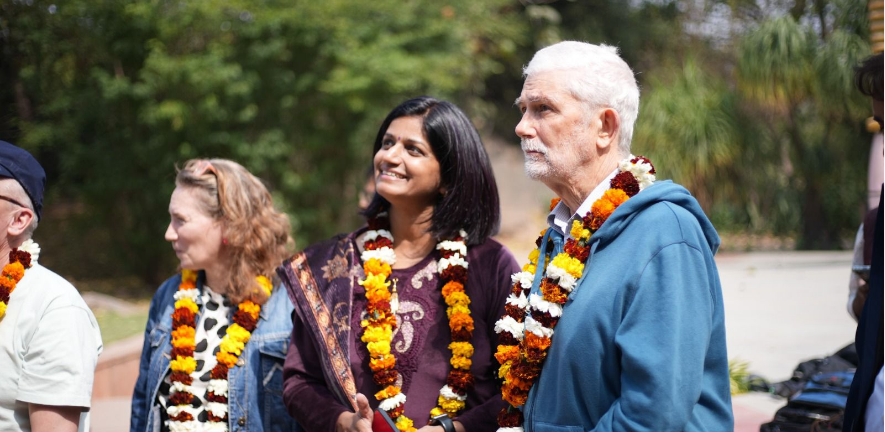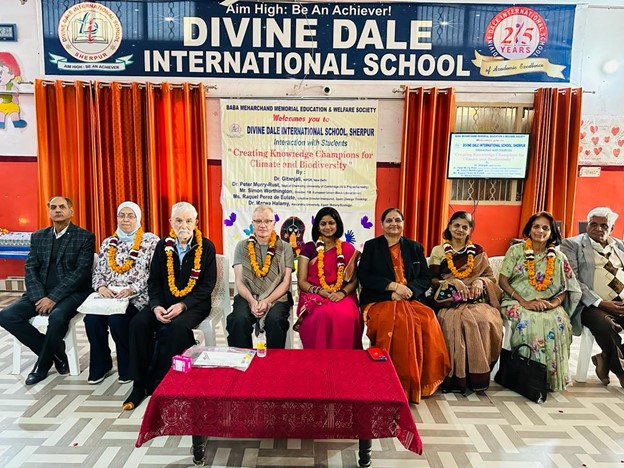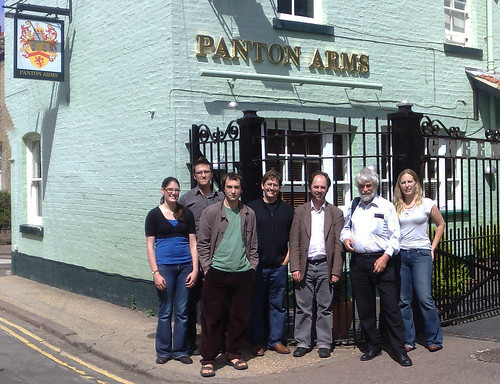
Peter Murray Rust is an emeritus member of staff here and was a Senior Research Fellow at Churchill College. Earlier this year, he went on a trip to northern India to develop work in climate science, funded by the Cambridge-Hamied Visiting Fellowship.
“Climate change is one of the most urgent issues of our time,” says Peter, “and it is critical that scientific knowledge is readily available to everyone.”
#semanticClimate
Peter has also co-founded a global citizen-science movement called #SemanticClimate, whose mission is to make climate data accessible. The team develops AI to analyse climate reports that can’t usually be read by computers, such as PDF documents. They do this through research internships and outreach. The AI finds keywords and summarises the findings so that users do not have to trawl through an entire document. The AI has been trained on the Intergovernmental Panel on Climate Change (IPCC) database, which is the United Nations body for assessing science related to climate change.
“What we're doing is converting these difficult-to-understand publications into a language that people can understand,” explains Peter.
Dr Gitanjali ‘Gita’ Yadav, Fellow of St Edmund’s College, co-founded #semanticClimate with Peter, when she was a lecturer at the Department of Plant Sciences, University of Cambridge. She is a group leader at the National Institute of Plant Genome Research (NIPGR), India and does a lot of interdisciplinary research in phytochemistry which is why her and Peter started working together 10 years ago.
.png)
AI for Climate Hackathon at Center for Applied Geomatics, Ahmedabad, Gujarat.
Cambridge-Hamied Visiting Fellowship
The Cambridge-Hamied Visiting Fellowship is generously supported by the Yusuf and Farida Hamied Foundation as part of Cambridge International Strategy Office Programmes for India. Our department is named after Yusuf who is a generous benefactor of the sciences.
Touring India
Together, Peter and Gita spent 14 days visiting academics, NGOs and government bodies in northern India to discuss their work. During the academic visits they showcased the #semanticClimate toolkit and how it uses AI to extract knowledge from documents.
“Our trip helped us build a community of practice to make climate knowledge accessible to scientists in India,” says Peter. “We are still collaborating with the amazing people that we met on this trip.”
“Fundamentally, we want chemistry and climate science to be available to everyone,” says Peter. They brought the #semanticClimate software and skills to rural and urban communities across North India, sharing the concept of “learning by doing”, a really important part of this initiative.
.png)
Students from an underprivileged community played this climate-themed ‘Snakes and Ladders’ game designed by Peter Murray-Rust and young interns in India.
Communicating climate science isn't just about AI though; Peter and Gita redesigned some popular board games such as Snakes and Ladders and Bingo to have a climate focus and brought them to children in schools they visited in low-income communities. They introduced basic concepts such as how the scents are produced by a chemical process.
Gita adds: “We worked alongside NGO's like the CBN Foundation and discovered that board games are a wonderful tool to communicate climate science and biodiversity to citizens.”
In fact, they were so successful in this strategy that they have received funding from ICLEI South Asia for designing new games to communicate climate science and sustainability to society in a fun way
If anyone is interested in an internship at #semanticClimate, you can volunteer here!

Divine Dale School, Haryana where #semanticClimate developed a climate card game.
Chemical Markup Language

Peter and the team in front of the Panton Arms
Peter was a pioneer in developing Computational Drug Design and helped to found the Molecular Graphics Society. This brought together academics and industry to develop new methods for drug discovery. He started working with the Department in 1999 developing molecular informatics courses for Unilever. He formally joined the Centre in 2000 and received support from the UK's eScience program.
As part of the molecular informatics group, Peter developed the computer language (Chemical Markup Language) which allowed chemistry to be read by machines and fed into calculations. This software is the precursor to the AI that #semanticClimate uses and can read a document such as a pdf, tag relevant chemical keywords and create a simple description of the chemical reactions and results.
Chemical tagger
If you want to get an idea of how semantic tools like #semanticClimate work then you can try Peter’s programme Chemical Tagger. This program looks at text, such as a paper abstract, and then summarises it with a list of tags and chemical models. This tool is a quick and easy way to get an overview of the reactions used in a paper for example.
Chemical Tagger is an open source tool and is available on the university website.

